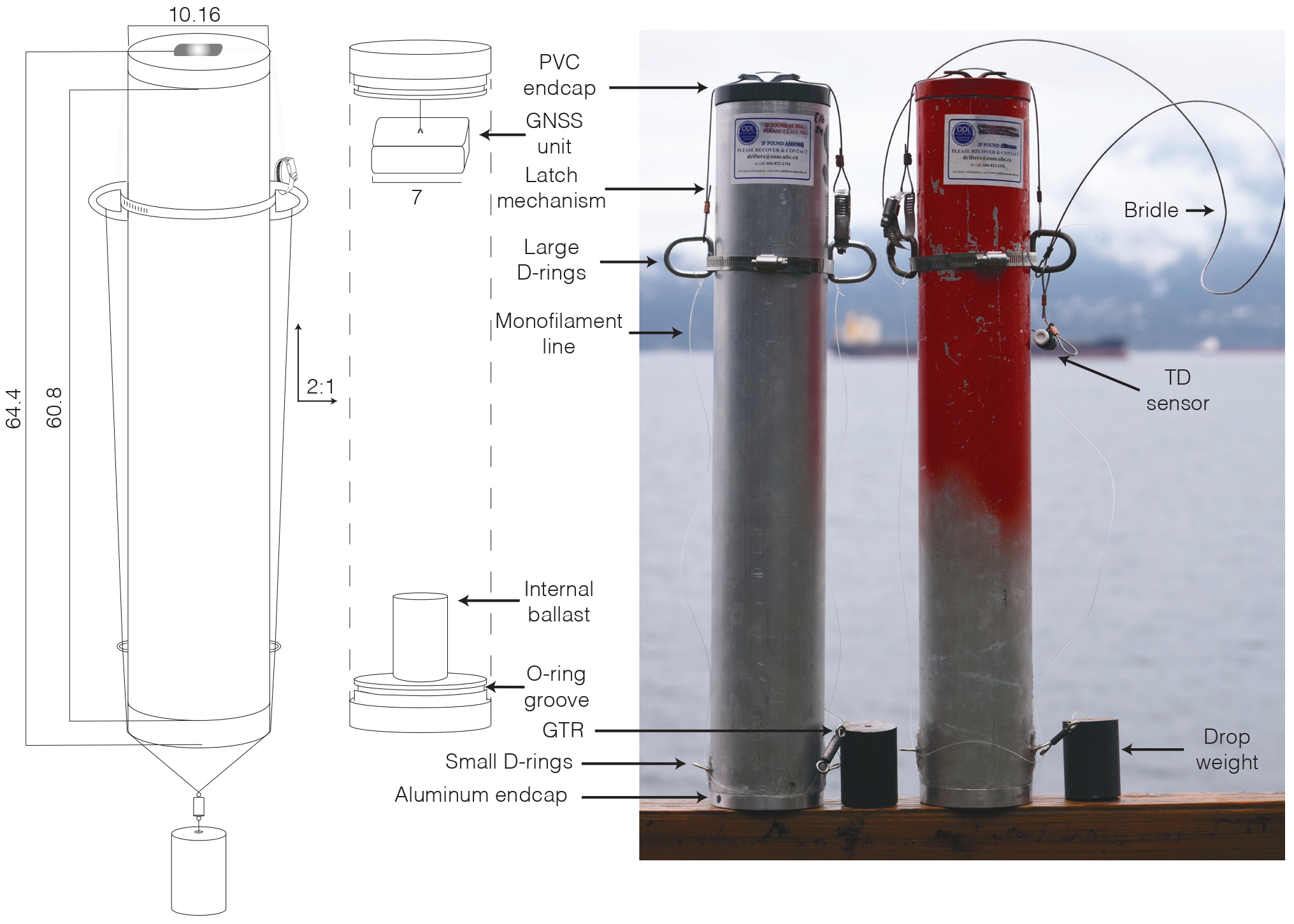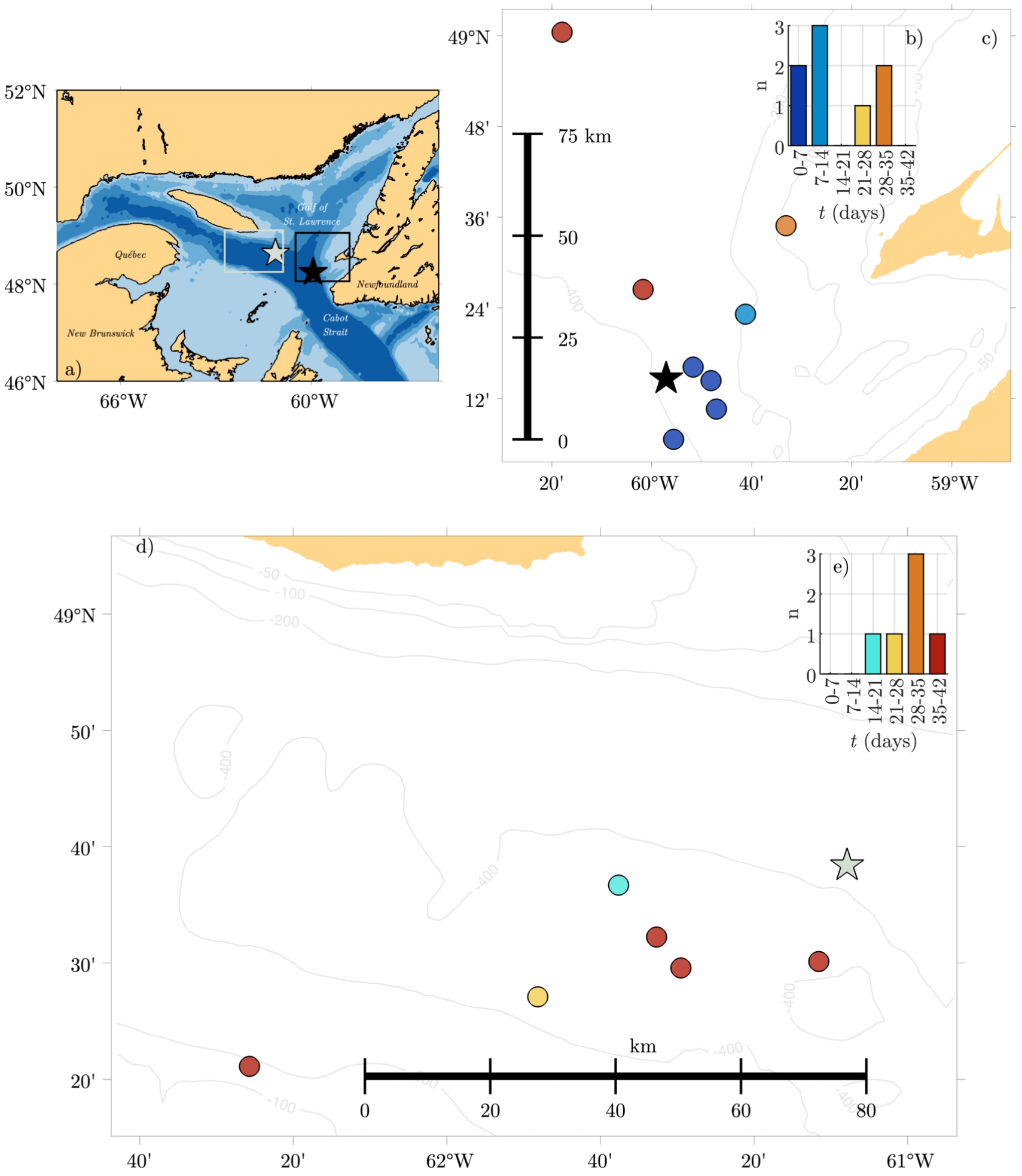
How do we measure ocean circulation? There are a growing number of studies that use large numbers of simple, inexpensive, freely-floating drifters to track the movement of water at the surface of the ocean. Our idea is to apply this concept to the deeper ocean by producing a simple, inexpensive float made from easily-available materials that can be built by anyone with some engineering knowledge. Their nickname comes from their passing similarity to the grandparent of all neutrally buoyant floats, the Swallow floats; they are "Swallow-ish", or "Swish" floats.

Costing just $300 CAD each, these floats are carefully ballasted to sink below the ocean surface to a target depth and drift for a period of time ranging from days to a month, before releasing a ballast weight, returning to the surface, and transmitting their location via satellite. With enough of them deployed in the same region, we can use their resurfacing locations to get a good idea of the transport and diffusivity patterns in the deep waters of an area.
After developing these with the Ocean Dynamics Lab at the University of British Columbia, these floats are now part of an ongoing monitoring program in the Strait of Georgia to study the dispersal of pollutants. Further, my collegue and I converted the Swish float idea into a fun science activity for high-schoolers: read about it here!